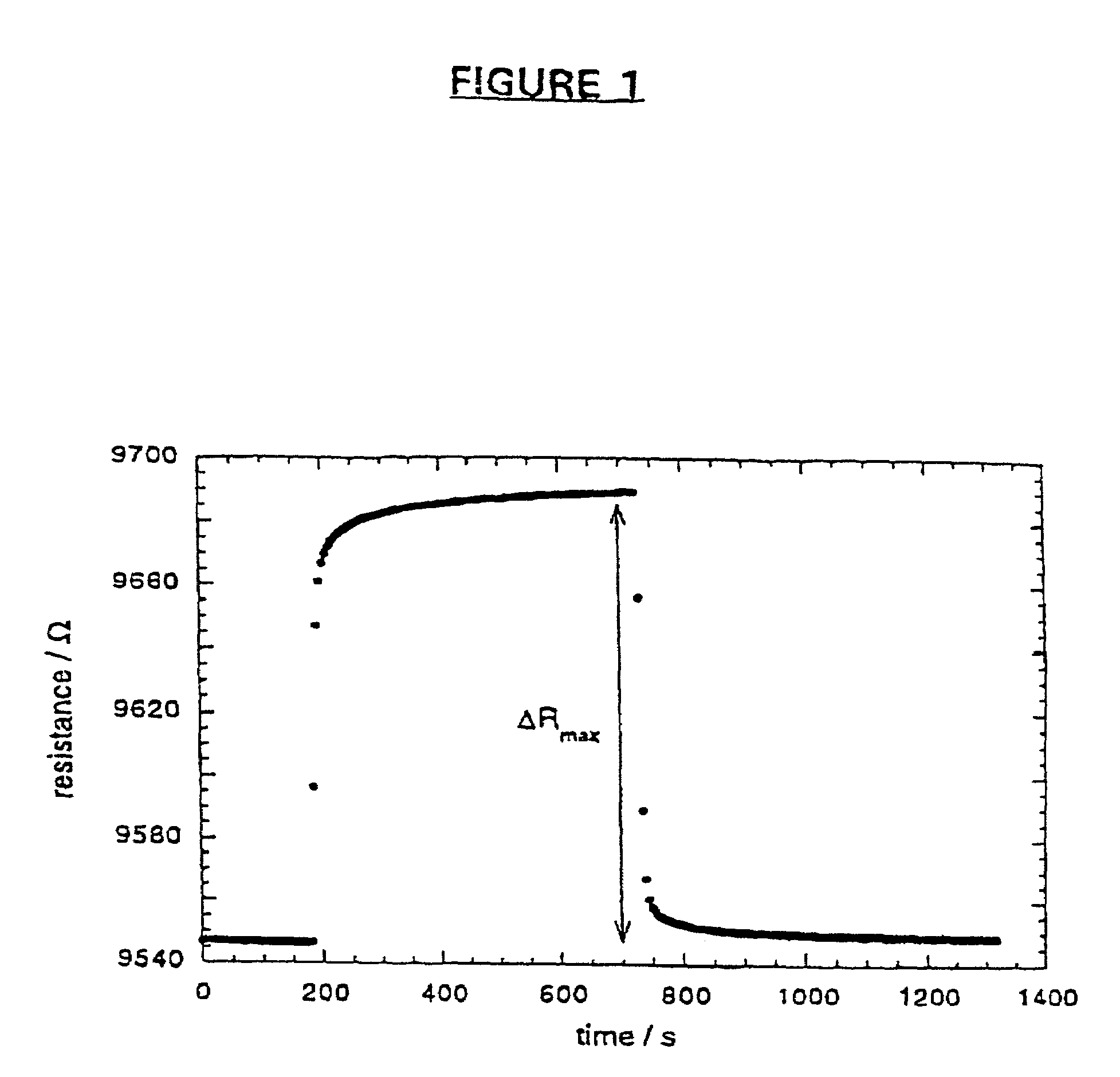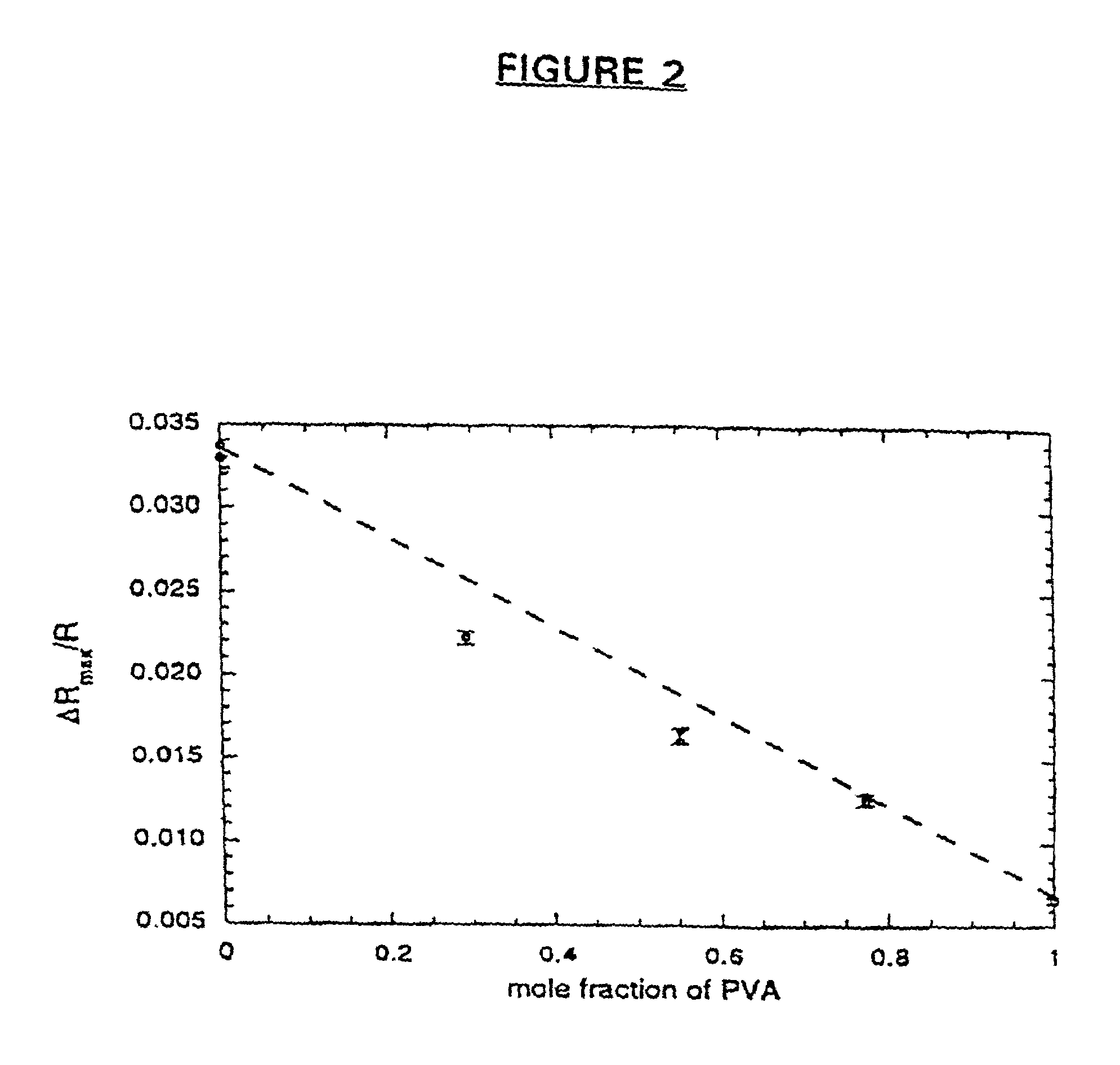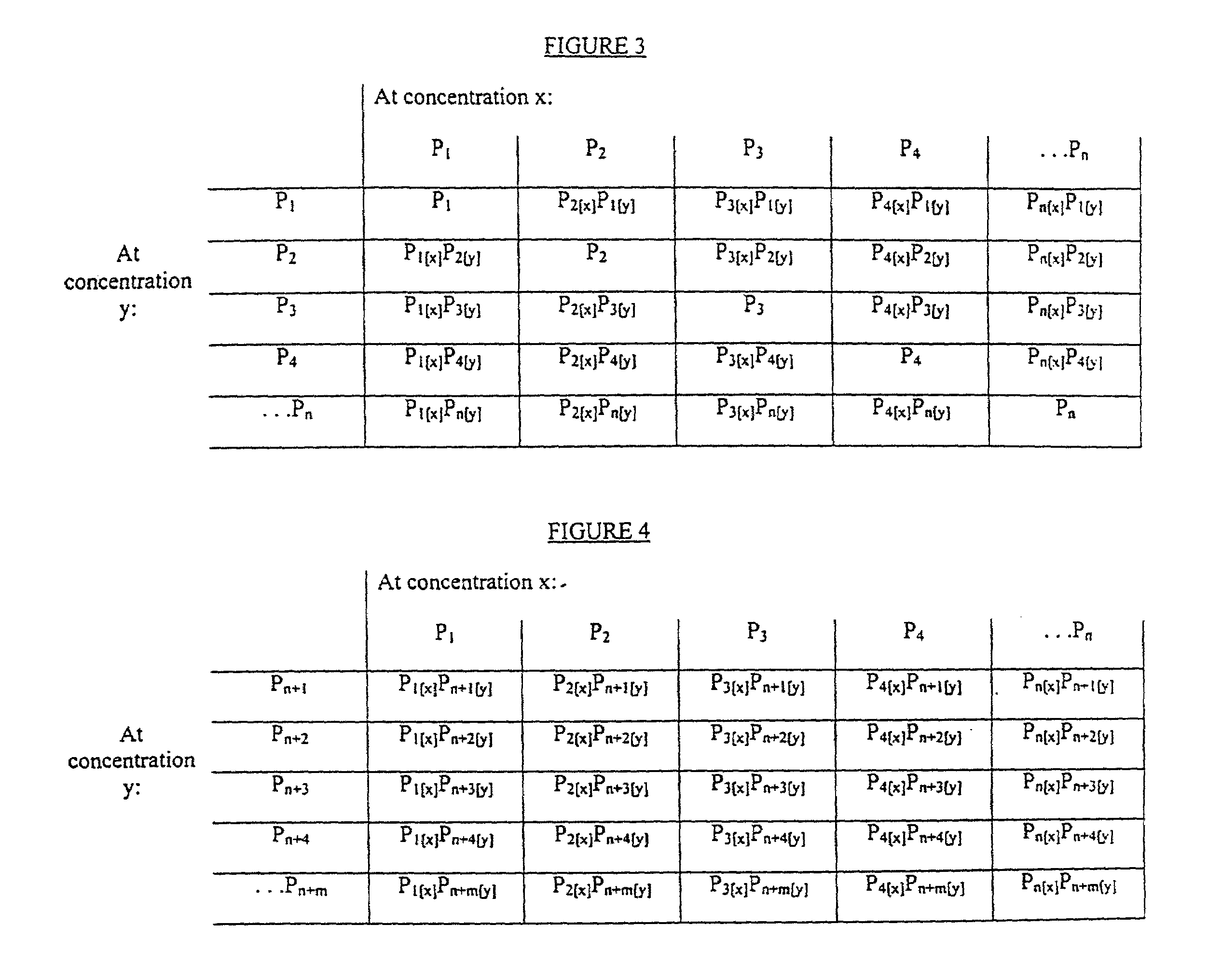Compositionally different polymer-based sensor elements and methods for preparing same
a sensor element and polymer technology, applied in chemical/physical processes, biological material analysis, material resistance, etc., can solve the problems of lag in the ability of canines or humans to produce the response they are capable of, the variability of the detectable signal produced, and the inability to produce the respons
- Summary
- Abstract
- Description
- Claims
- Application Information
AI Technical Summary
Benefits of technology
Problems solved by technology
Method used
Image
Examples
example 1
[0078]Two organic polymers, poly(vinyl acetate)(PVA) and poly(methyl methacrylate) (PMMA), were selected to form compositionally varied sensors to determine if those sensors would be capable of providing a detectable signal which is not linearly related to the mole fraction of either of the organic polymers present in the sensor. Five different PVA / PMMA blends were investigated as carbon black-containing chemically sensitive resistors. The combinatorial sensor fabrication was achieved by combining the two initial base polymer feedstocks to produce solutions of PVA / PMMA mixtures having PVA mole fractions of 0.000, 0.292, 0.551, 0.773 and 1.000, respectively. Each stock solution contained 25 mL of tetrahydrofuran (THF) and 250 mg total dissolved organic polymer, with nominally identical procedures used to fabricate all sensors. To introduce the electrically conducting carbon black component into the composite, a 10 mL aliquot of each stock solution was then combined with 43 mg of carb...
example 2
[0097]Compatible blends of poly(vinyl acetate) and poly(methyl methacrylate) have been used to produce a series of electrically conducting carbon black composites whose resistance is sensitive to the nature and concentration of an analyte in the vapor phase. See Lewis, Grubbs, Severin, Sanner and Doleman, “Use of Compatible Polymer Blends to Fabricate Arrays of Carbon Black-Polymer Composite Vapor Detectors,”Analytical Chemistry, in press (1998), incorporated herein by reference in its entirety. The dc electrical resistance response of the composites was found to be a nonlinear function of the mole fraction of poly(vinyl acetate) in the blend. These compatible blend composite detectors provided additional analyte discrimination information relative to a reference detector array that only contained composites formed using the pure polymer phases. The added discrimination power provided by the compatible blend detectors, and thus the added diversity of the enhanced detector array, was...
PUM
| Property | Measurement | Unit |
|---|---|---|
| of time | aaaaa | aaaaa |
| frequency | aaaaa | aaaaa |
| frequency | aaaaa | aaaaa |
Abstract
Description
Claims
Application Information
 Login to View More
Login to View More - R&D
- Intellectual Property
- Life Sciences
- Materials
- Tech Scout
- Unparalleled Data Quality
- Higher Quality Content
- 60% Fewer Hallucinations
Browse by: Latest US Patents, China's latest patents, Technical Efficacy Thesaurus, Application Domain, Technology Topic, Popular Technical Reports.
© 2025 PatSnap. All rights reserved.Legal|Privacy policy|Modern Slavery Act Transparency Statement|Sitemap|About US| Contact US: help@patsnap.com



